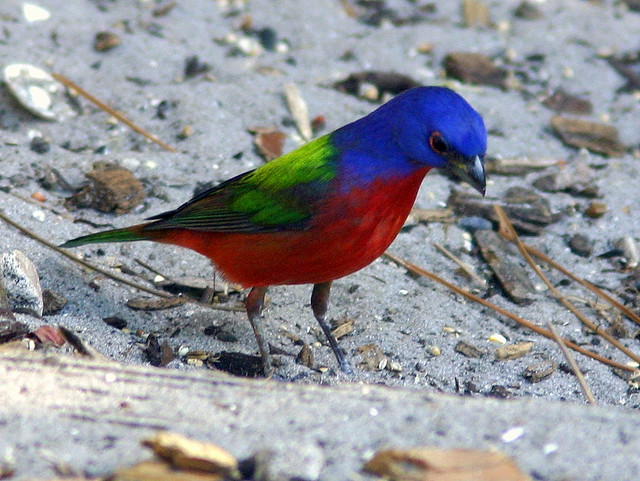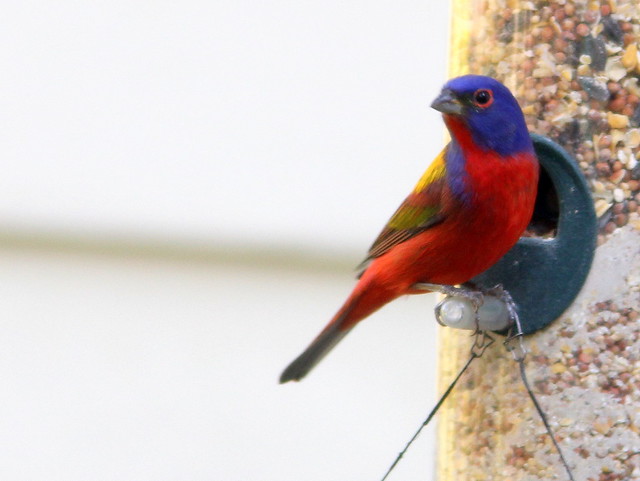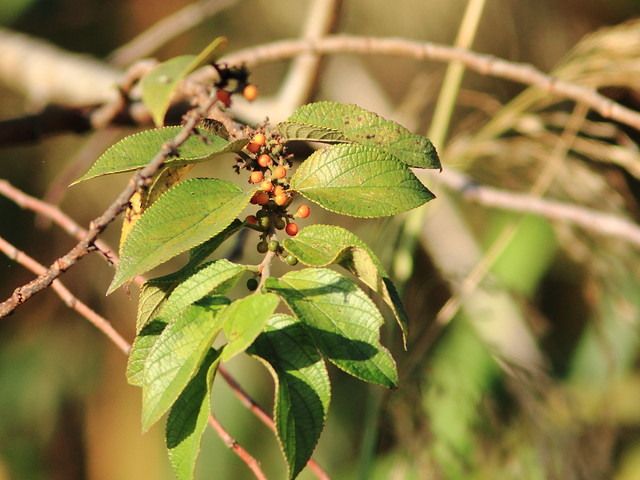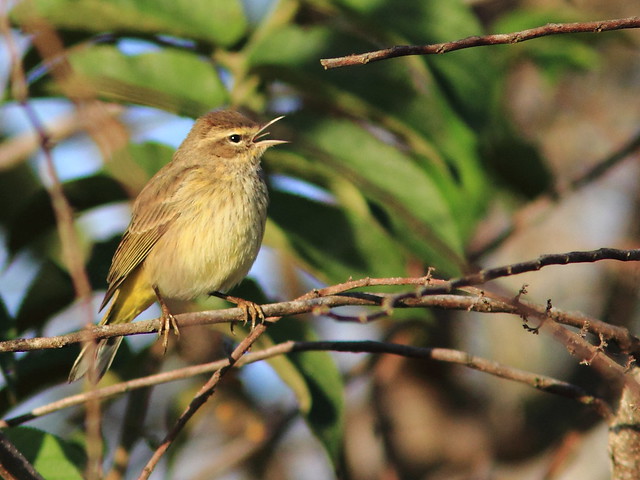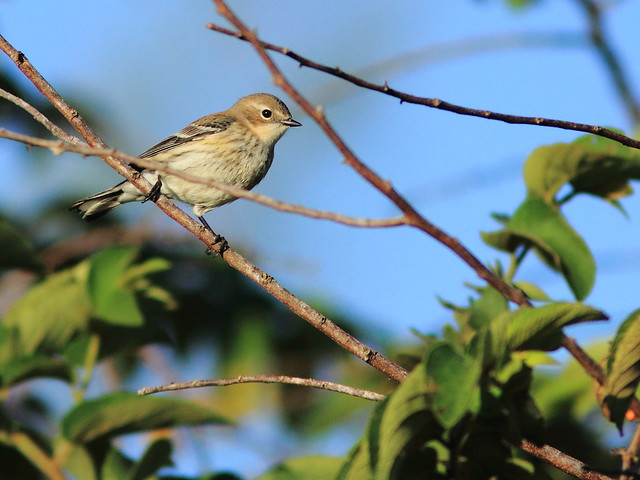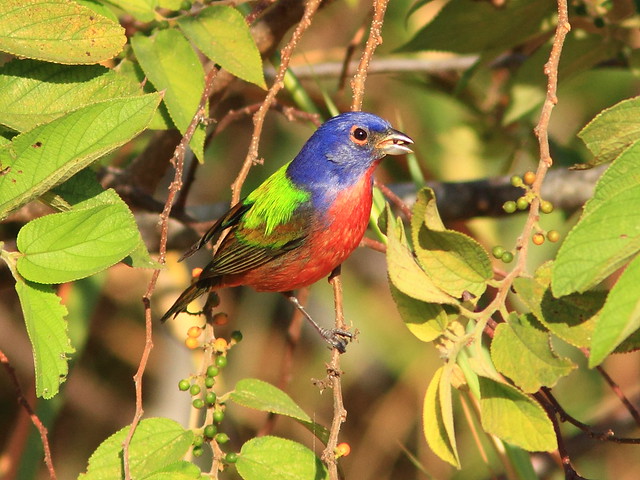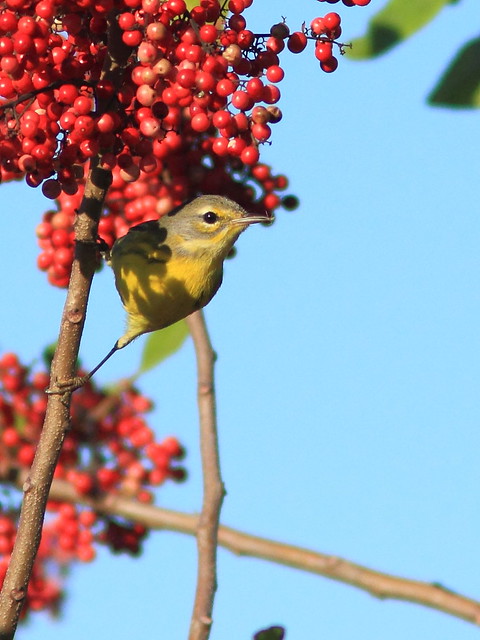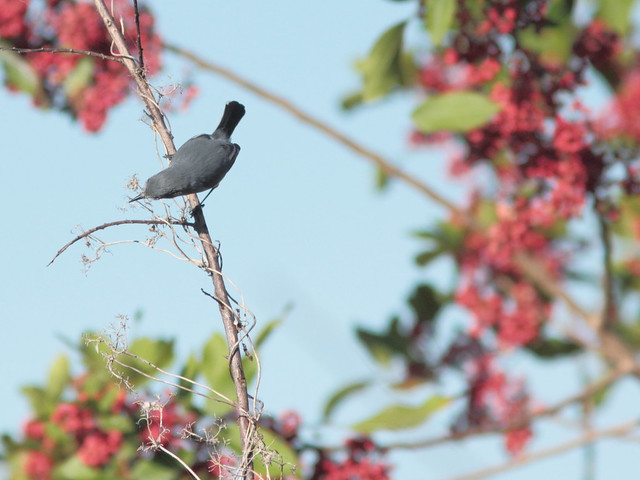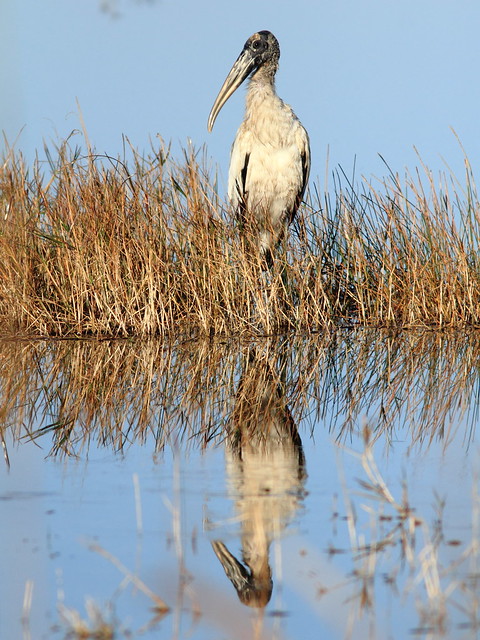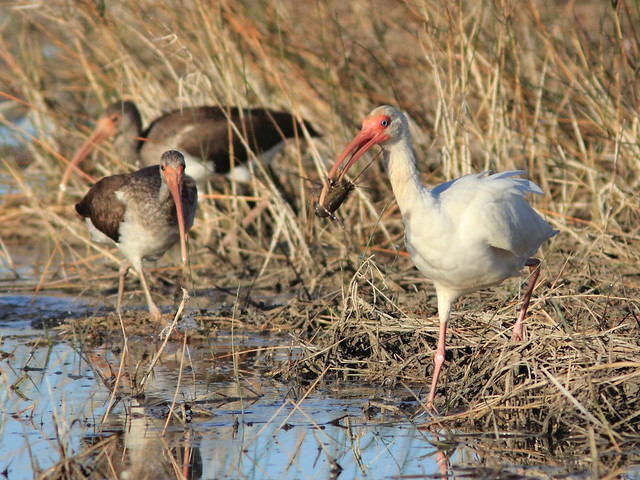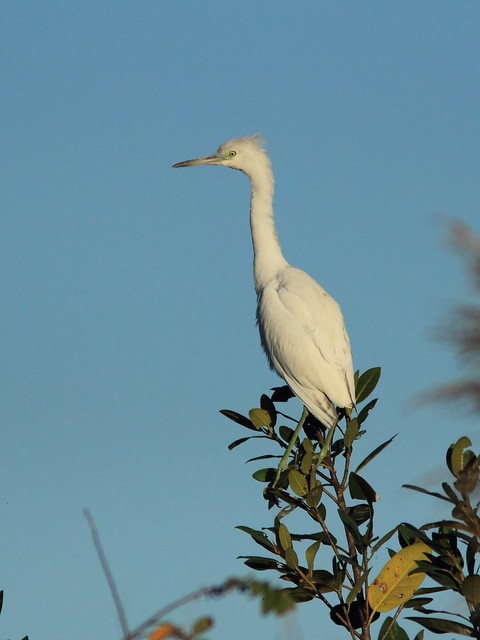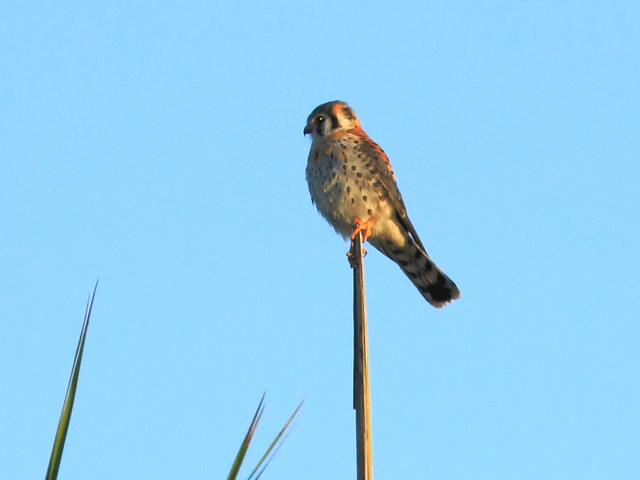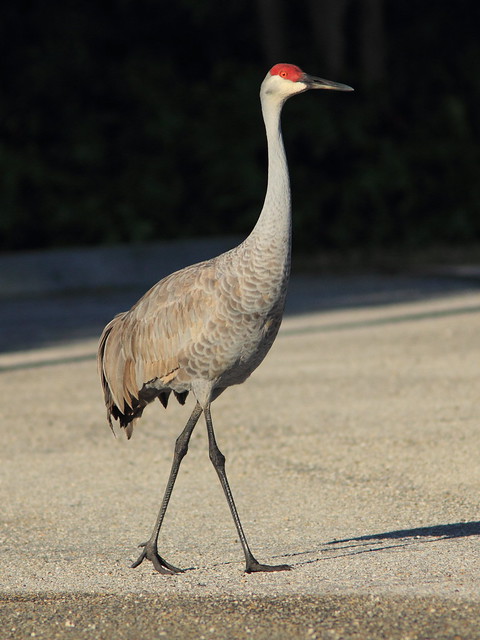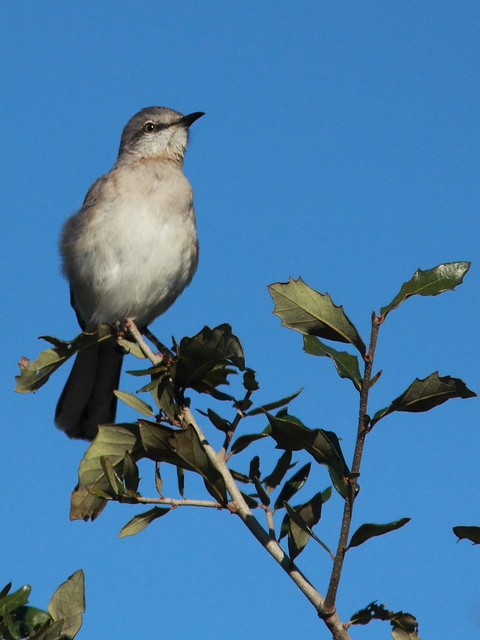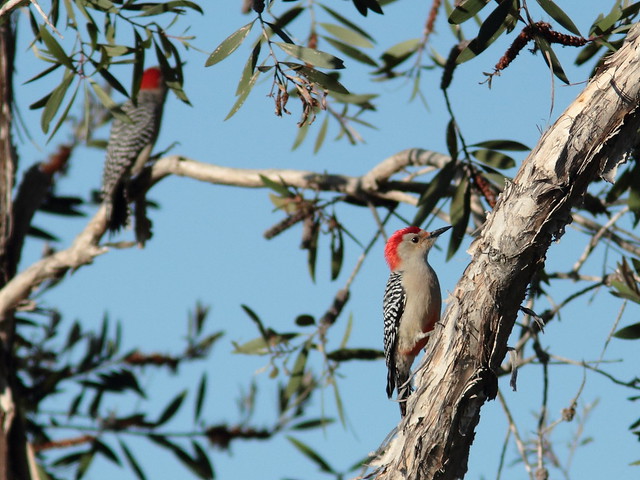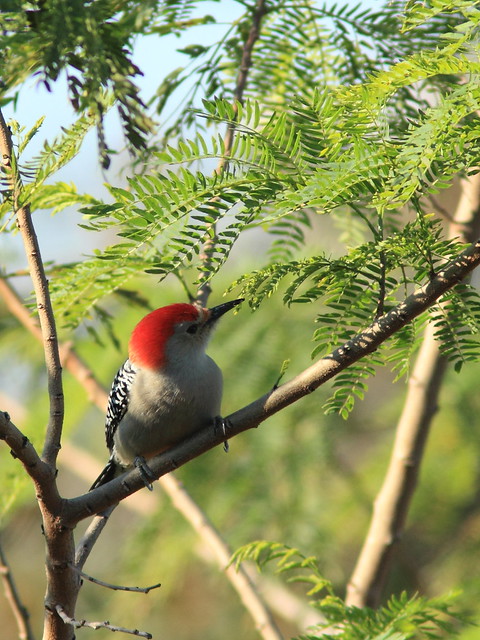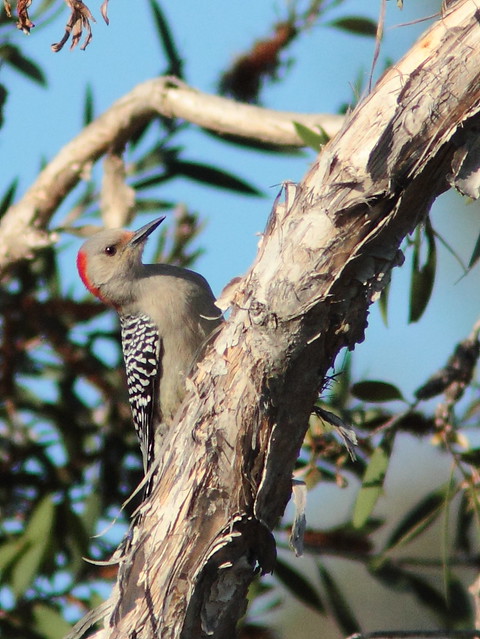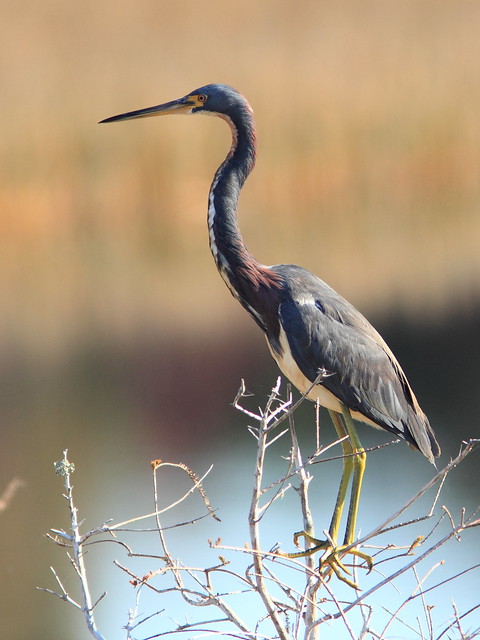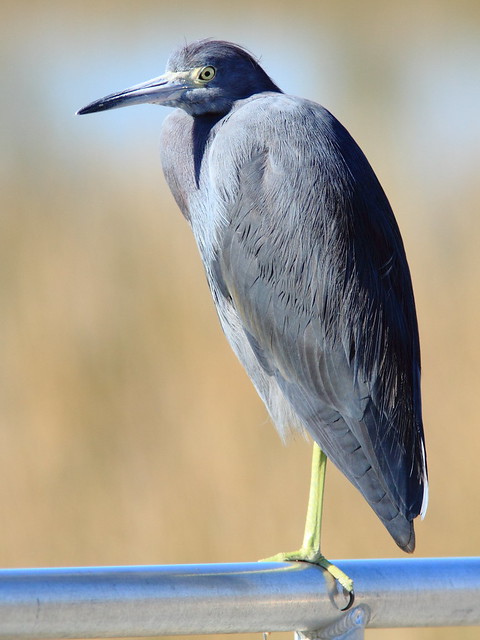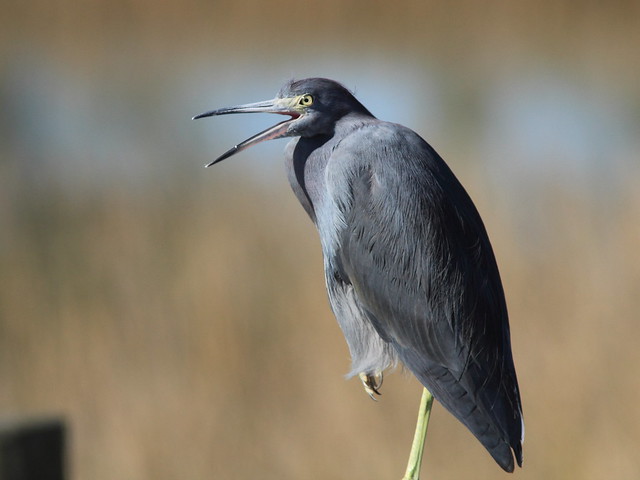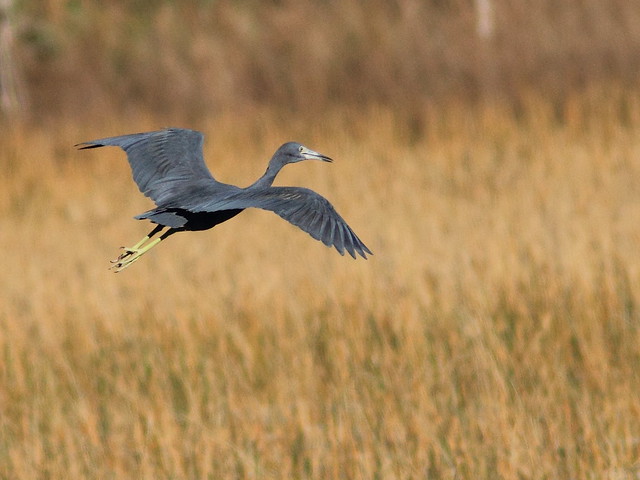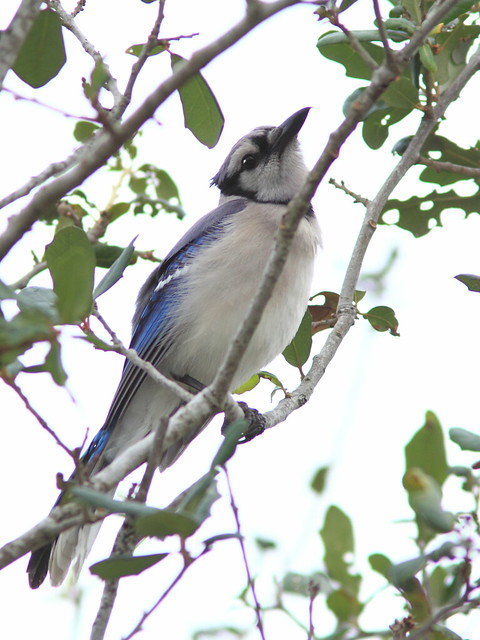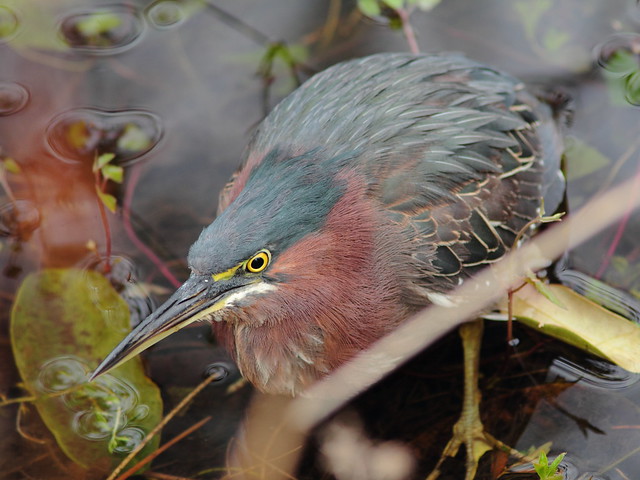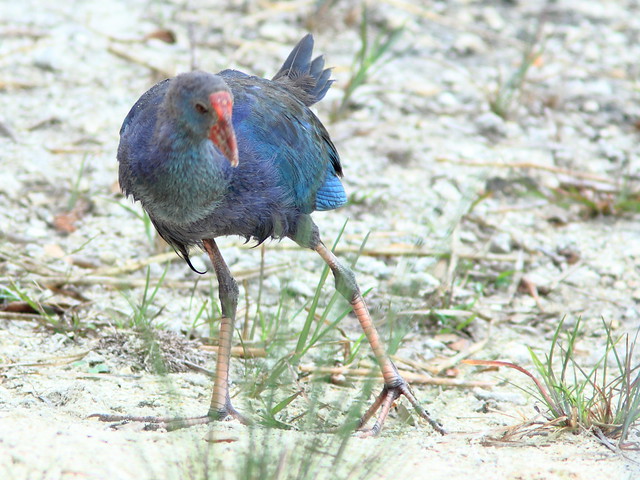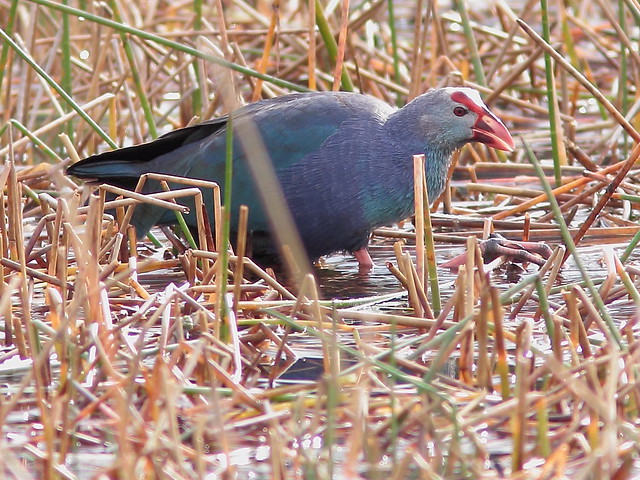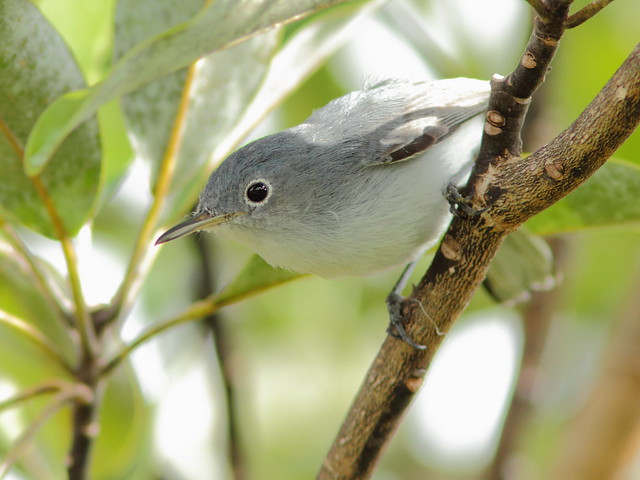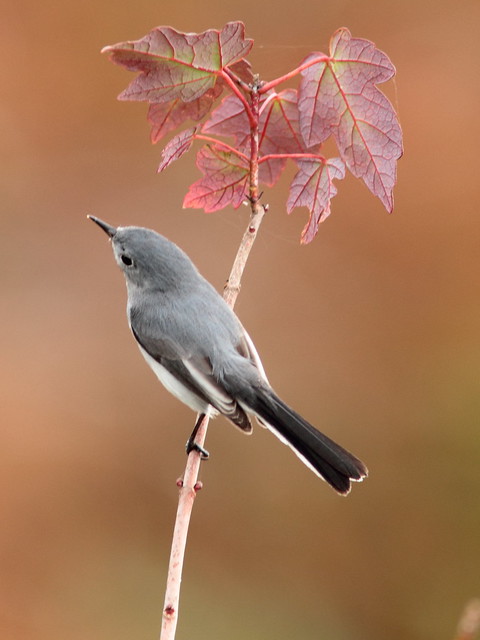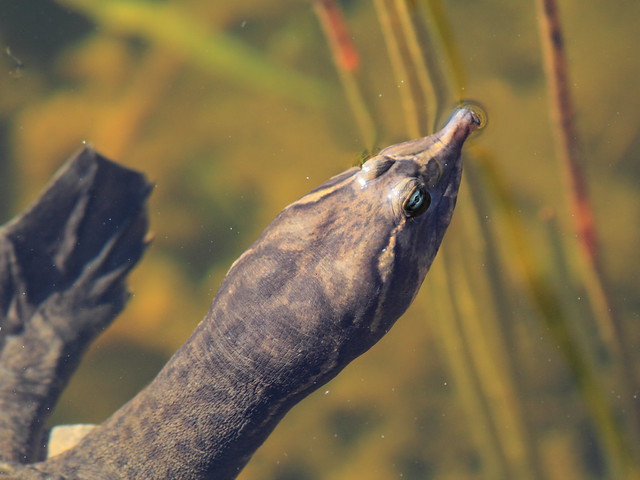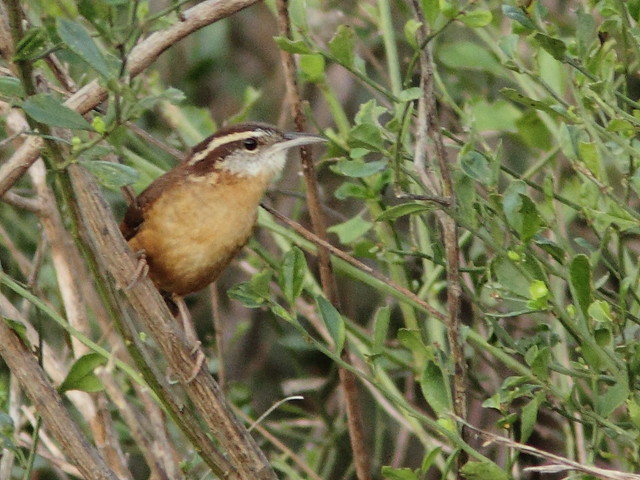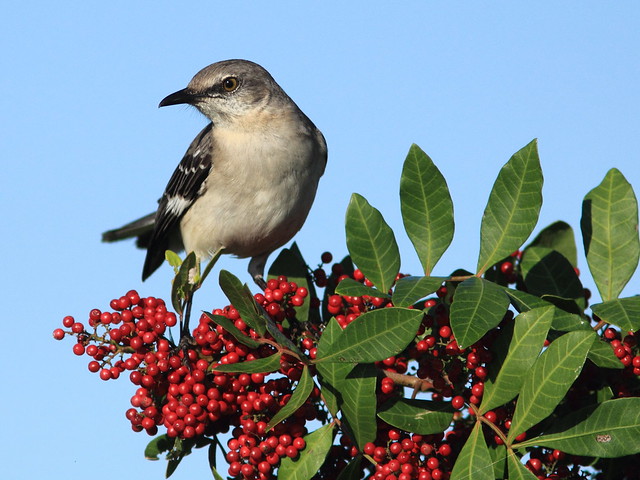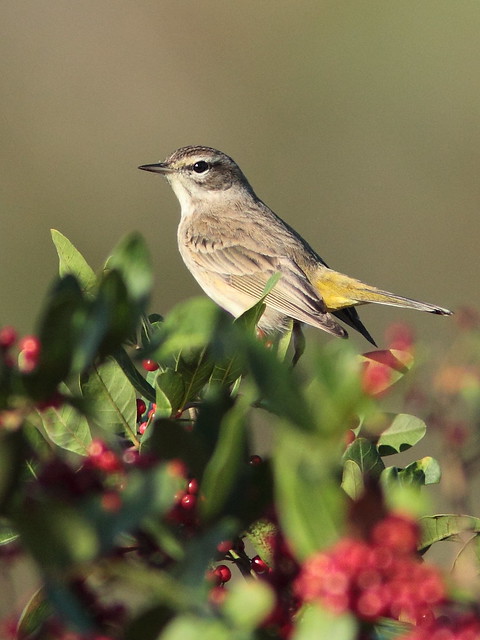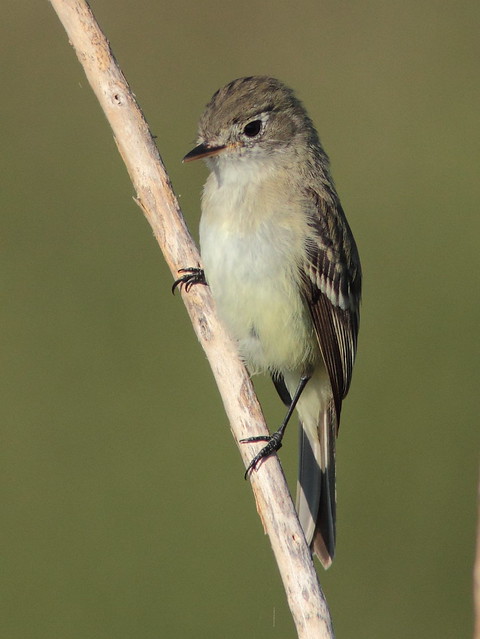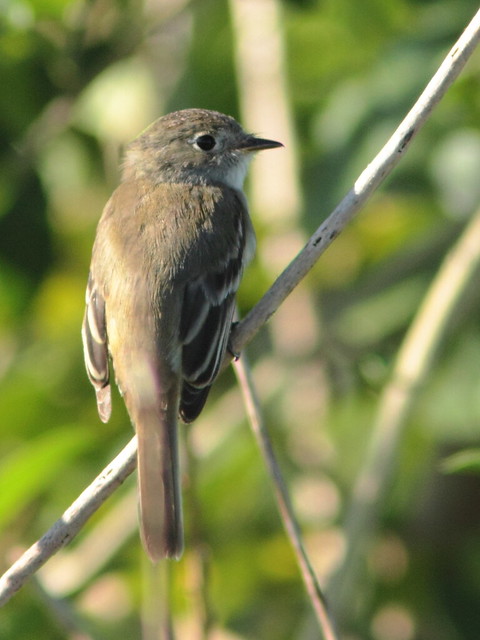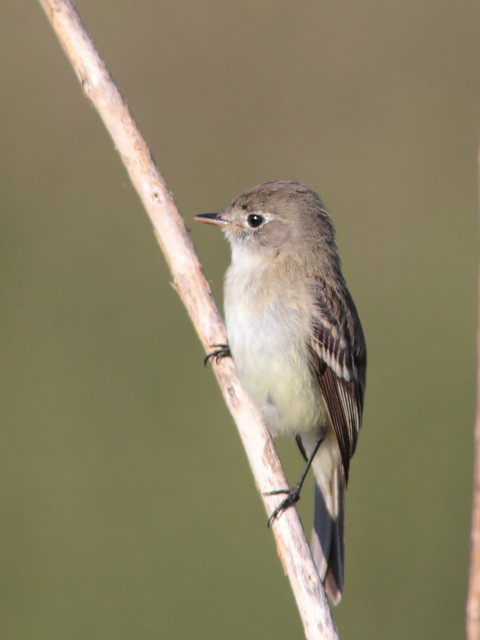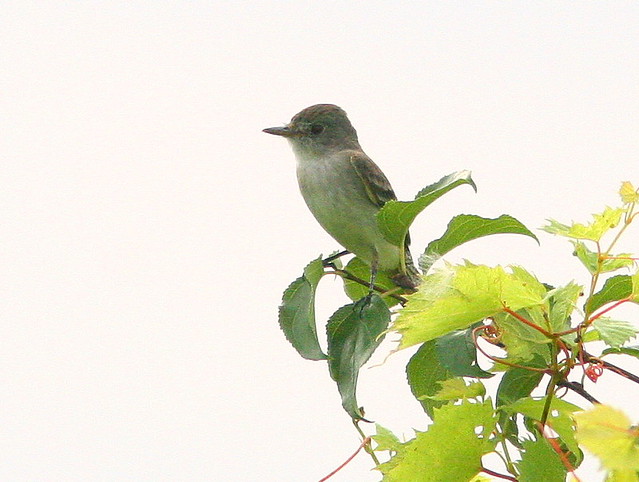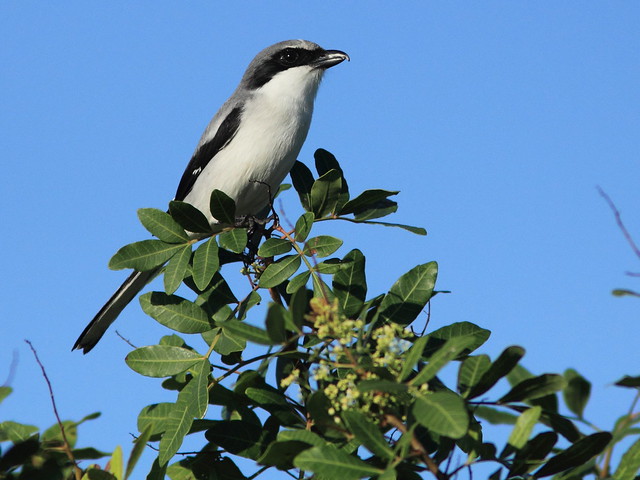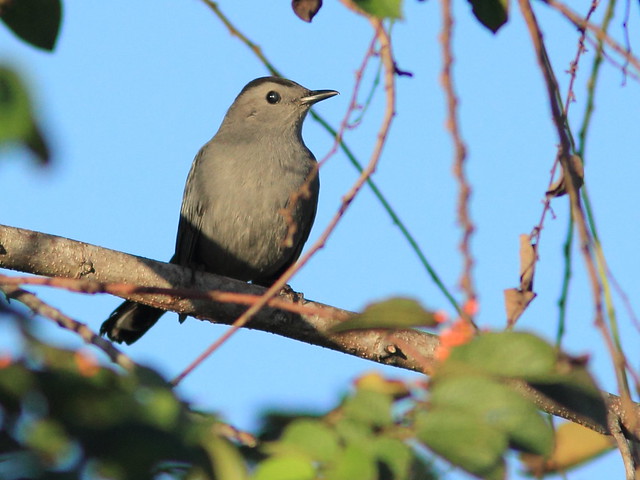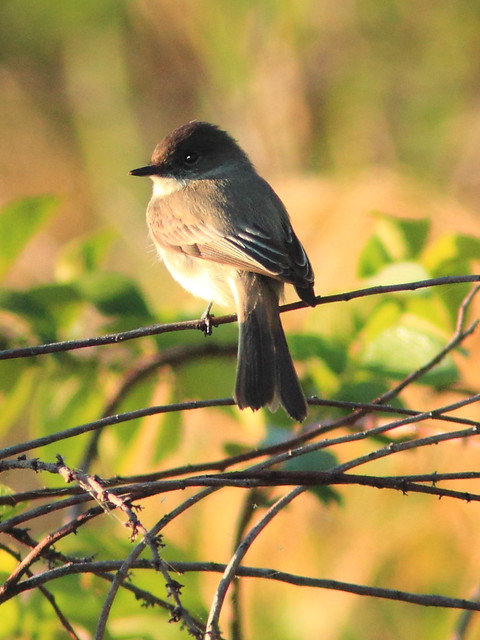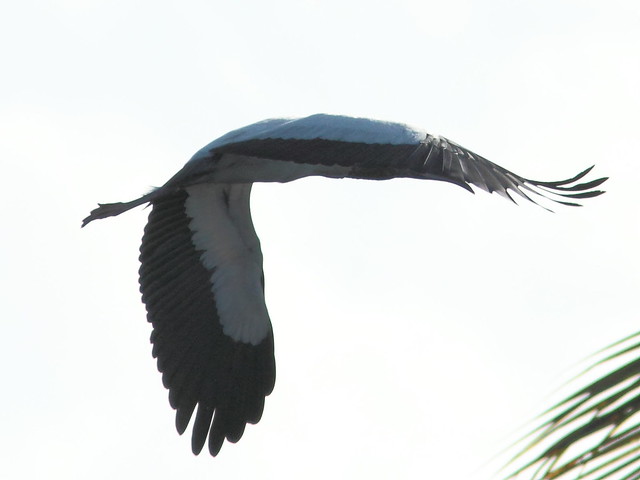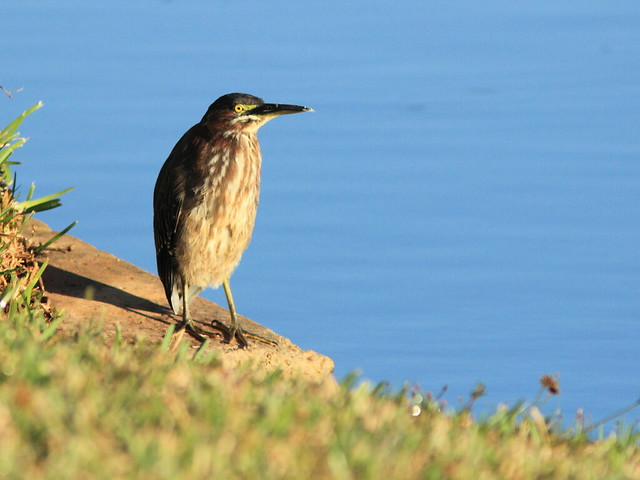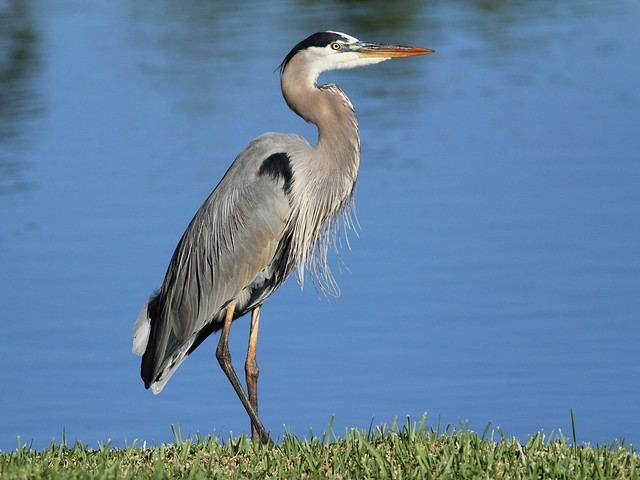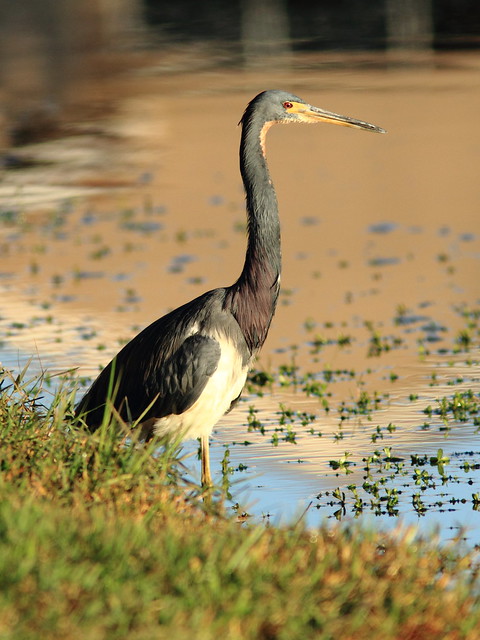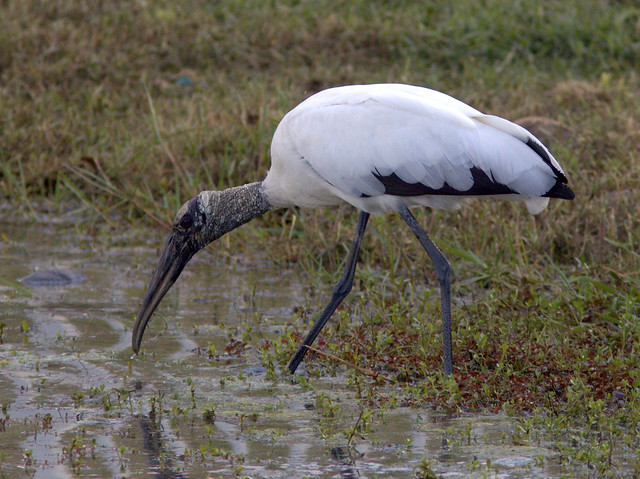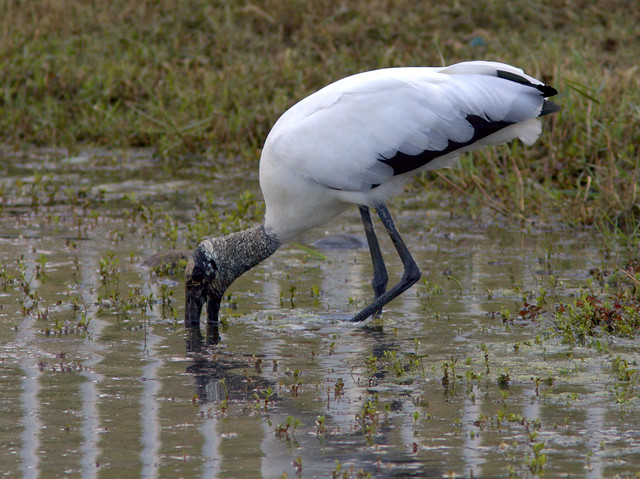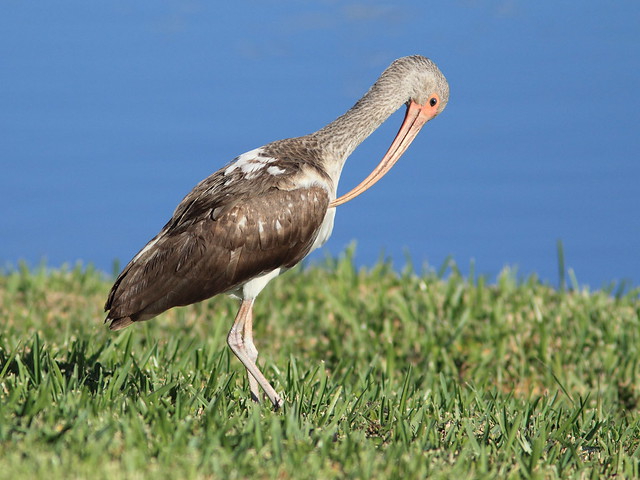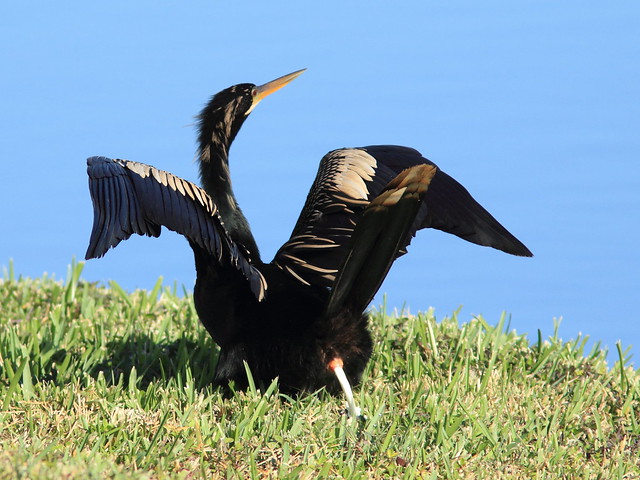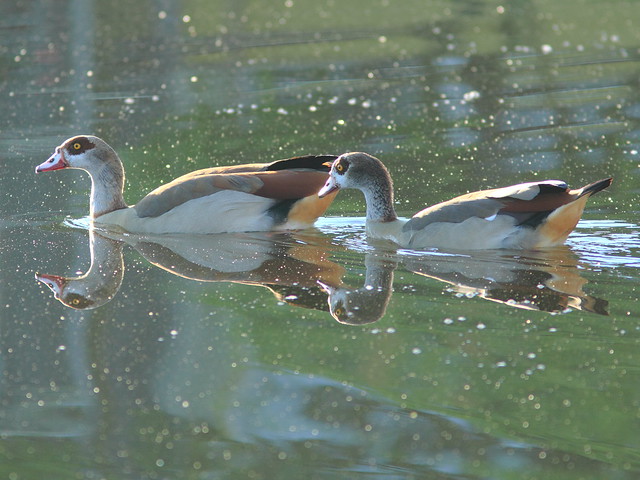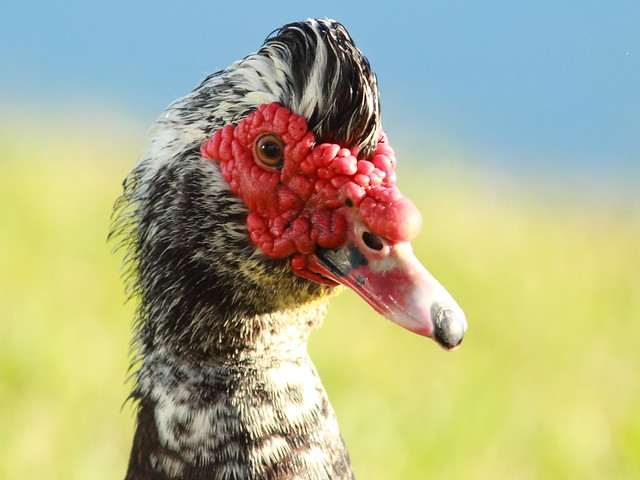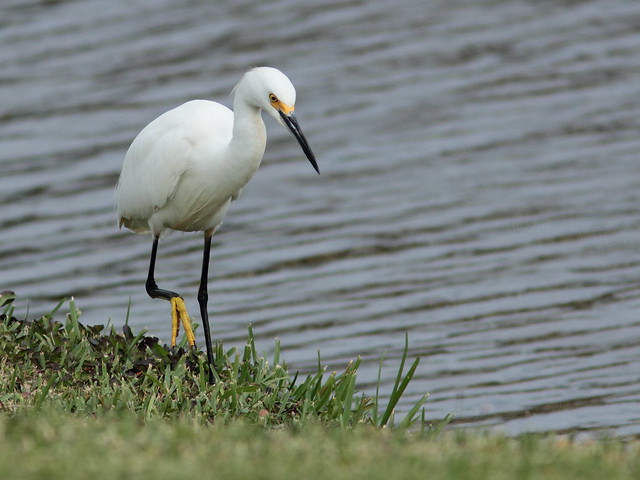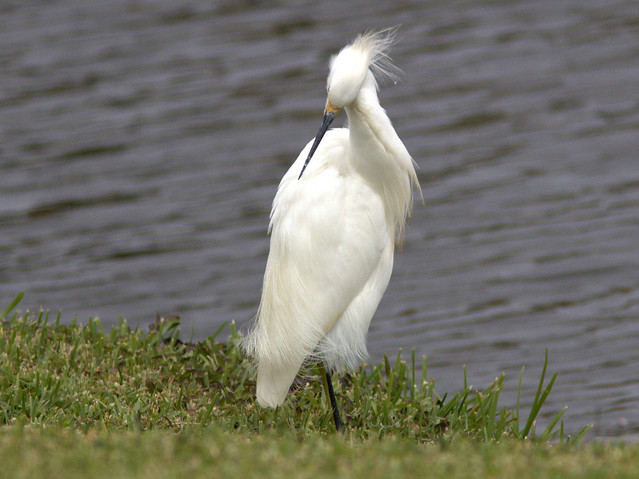Posted by: Ken @ 6:37 am
This is the fourth winter that Mary Lou and I have been monitoring a Bald Eagle nest that is located only about 1 1/2 miles from our South Florida home. So far, they are known to have successfully raised eight eaglets since the spring of 2008. In a previous post we provided an overview of this, the first active Bald Eagle nest in Broward County since the 1960’s, before DDT was restricted. We organized a team of eagle watchers to monitor and help protect the nest, and I serve on a City of Pembroke Pines Bald Eagle Sanctuary Steering Committee that has helped develop changes in planning documents and recommended an ordinance to better protect this and any other nest from disturbances.
We visited the eagle nest Monday morning January 15. The first egg was laid on or about December 11, and this was the day we expected it might be hatching. When we arrived at about 8:30 AM we could see the top of the head of one adult bird deep down in the nest. The incubating adult tends to sit a bit higher, “tenting” any newly hatched chick, so we took this to be a sign that the first egg has not hatched.

The bird did move about, but never stood up during the hour or so that we observed the nest. A second adult flew and roosted on the horizontal limb above the nest, began calling excitedly and looking down at the nest. We do not think the bird on the nest called back. Our experience has been that such a change in behavior suggests that an egg may have indeed hatched.



Then the adult flew off to the east, only to circle behind the nest and take a roost in the dead Melaleuca grove west of the nest. It appeared to be the female, though we could not be certain.


A Red-shouldered Hawk was roosting just west of the nest tree.

A Great Egret flew over the nest, and I stitched together 15 sequential images. Here are a few.

Two days later (January 17), the incubating bird was more visible. Is it possible that she is indeed “tenting” a chick that has hatched? No other adult was in sight as we watched from about 12 noon to 1:00 PM.

Here, the adult (female?) is peering down underneath her– is she rearranging eggs or tending to a hatchling? Her head and sometimes part of her back and tail remained visible the entire period of observation, something that had not happened since the eggs were laid.

On January 22 we were treated to the sight of a small falcon that flew in and roosted just west of the Bald Eagle nest tree. It made two flights out and returned to the same tree. Its wingbeats were energetic and it flew fast and directly. It was heavily streaked and its profile showed its head to be smaller than an American Kestrel’s. It had one whisker stripe and no strong face pattern as seen in a female kestrel. It appeared to be an immature Merlin. Photos are from about 200 feet, so they are not very sharp.


Mary Lou and I continued watching the nest almost every day, and saw definite signs that the egg had indeed hatched, such as the presence of prey in the nest and feeding of one or more eaglets. On Thursday morning (January 26) we watched from about 10:30 until about 11:15. When we arrived the female was roosting on the right edge of the nest, looking about and appearing restless.

Mary Lou correctly guessed that she was awaiting a food drop, as within a few minutes the male flew in with a medium sized fish that looked like an exotic Mayan Cichlid, a common fish in local lakes.



The pair called to each other and touched bills in a sort of recognition ritual, and the male (on the left) flew off.


The female tore at prey and fed one or more eaglets. We still could not see the eaglets over the rim of the nest– we assume the nest cup is a bit to the rear. In past seasons the young have appeared over the nest rim at between 12 and 23 days of age. If our behavioral observations are correct, hatching occurred on January 15, and the first eaglet would be 11 days old this day.


Turkey Vultures must now be smelling the prey, as a couple of them circled several times close around the nest tree. In the past we have seen the eagles chase them off.
On Friday morning (January 27) an adult was quiet on the nest and there was no sign of its mate as we watched for about 3/4 hour from 9:30 to 10:15 AM. The oldest chick was then about 12 days old. A front page story about Florida’s urban eagles appeared in the paper that morning, with a quote and a slide show of some photos of me and other eagle watchers.

Of interest, a male Northern Harrier flew over the nest area. Mature males, which are gray and white with black wingtips, are outnumbered 8 or 12 to 1 by the larger brown females and immature birds, so it is a treat to see one.

A flock of Fish Crows chased a colony of Monk Parakeets away from their nest on a high light pole across the street from the eagle nest. I thought they were looking for eggs or young birds to eat, but instead they stole twigs, presumably to use on their own nests. Fish Crows can be predators on the very young eaglets.

Saturday (January 28) morning we checked the nest, hoping to see one or more chicks peeking over the rim of the nest. The first-hatched should be about 13 days old. At 8:15 AM the female was quiet and rather low in the nest, so we assumed that the chick(s) had been fed and were probably sleeping. We note that when a food drop approaches the hen stands high and gets restless. Therefore we went birding at Chapel Trail and returned at about 9:30 to find the male roosting in the nest tree on a horizontal limb above the nest. We had probably just missed the food drop.

Note the slimmer and more tapered body of the male. His bill also appears to be a bit less massive than that of the female. This year he does not have the dark streaks on the outer tail feathers that helped us distinguish him the past two seasons. The power lines just in front of the nest are one of the hazards faced by urban-nesting eagles.

The female was active, tearing at prey and feeding the the chick(s). I think we had just missed a prey drop. About 10 minutes after our arrival the male flew away low to the west.

The female remained on the nest for less than 5 minutes before flying over to roost on a Melaleuca snag just to the west.
She is noticeably larger and rounder than the male.



She flew back to the tall pine just west of the nest and roosted a few minutes, then settled back on the nest. The nest was left unguarded for about ten minutes. This rarely happens when the chicks are less than two weeks old. See the Eagle Milestone spreadsheet which chronicles observations over the past four breeding seasons (PDF). This was the first time this season we witnessed the nest uncovered and without a lookout nearby.
Posted by: Ken @ 1:31 pm
Mary Lou’s favorite local bird is the Painted Bunting, but the Elegant Trogon goes down as her “anywhere” favorite. (Read here how the trogon was responsible for Mary Lou’s “conversion.”) Both share bright green and red feathers, though the Painted Bunting adds a generous dose of brilliant blue. My favorite? It’s hard to say, as the Rose-breasted Grosbeak was probably my “epiphany” bird. As a kid I will not forget watching a male displaying to a female on the ground, walking around with his red chest all puffed up and singing brilliantly. However, Painted Buntings are one of my favorites, with a caveat– I really like seeing them in the wild rather than at feeders.
Painted Buntings winter here, and I have gotten plenty of shots of males at Okeeheelee Park, in western Palm County. On the feeder…
…and picking up scraps under the feeder.
The feeders at Corkscrew Swamp are also reliable places to find Painted Buntings.
In the field, male Painted Buntings seem to be quite reclusive. Perhaps they lurk in the shrubs to hide their bold coloring. Female and immature buntings, while beautiful in their own right, have been much more cooperative subjects.
In South Florida, we have a natural bird feeder. The Trema is a fruiting tree that is very valuable to wildlife. It sets fruit almost continuously during the winter, and its berries are in various stages of ripening. Individual trees seem to become more attractive to birds at different times. The favored tree changes from one week to the next.
The Tremas in this cluster along the gravel road that leads into the wetlands are the size of shrubs.
Trema berries form along the stems, and birds usually eat the red ones, though I have seen many take green berries as well.
Palm Warblers are numerous all winter, and they congregate in the Trema trees, probably more interested in gleaning insects that are attracted to the fruits.
Yellow-rumped Warblers do relish the Trema berries.
This week, one particular tree fruited optimally. Catbirds and mockingbirds flocked to it, but among its visitors was a White-eyed Vireo that ate some of the berries.
Mary Lou and I were delighted when a male Painted Bunting flew in to join the feast.
The exotic and invasive Brazilian Pepper was imported as an ornamental plant and has spread all over South Florida. Although despised because it displaces much of the native flora, it too provides food throughout the winter. Raccoons seem to prefer it, judging by the copious amount of seeds in their scat.
Prairie Warblers have been scarce this winter, and I was pleased to find this female catching insects amid the pepper berries.
A Blue-gray Gnatcatcher was chasing small flying insects against a backdrop of clusters of Brazilian Pepper.
It took flight and I captured this image quite by accident.
The lake was as smooth as glass in the stillness of early morning. Along the shore, a Wood Stork cast its reflection.
A sun-bathing Anhinga was mirrored on the lake’s surface.
In the still-flooded grassland around the lake, a White Ibis had caught a crayfish, and was running away from a group of immature ibises that tried to steal its prize.
A white heron landed in a nearby tree, and I almost dismissed it as just another egret, when I noticed the color of its bill– bluish with a dark tip, and its green legs. It was an immature Little Blue Heron.
Walking back home, this American Kestrel watched me from atop the central shoot of a Royal Palm.
Click here for a searchable index of earlier ROSYFINCH RAMBLINGS posts.
Posted by: Ken @ 12:07 pm
During the busy holiday season we made time for brief birding stops at nearby Chapel Trail Nature Preserve in Pembroke Pines, Florida.
One sunny morning just before Christmas, the Sandhill Crane greeted us in the parking lot.
The crane permitted me to take a close-up as it preened.
A Northern Mockingbird stood out against the blue sky.
Red-bellied Woodpeckers were courting in a Melaleuca tree.
The male exhibited his bright red cap.
The female’s cap is just as bright, but does not extend down her forehead.
This Tricolored Heron roosted in a very small tree next to the boardwalk.
A Little Blue Heron perched on the rail of the canoe dock.
The heron then assumed some interesting postures before flying off
This morning, on our way back home from running chores we stopped by again before checking on the Bald Eagle nest that is about a mile away. The sky was fully overcast and there was the threat of rain, so we did not walk the full length of the boardwalk. The crane was not in the parking lot this time. We worry about its welfare, as it has a habit of walking across the busy street in front of the nature center. Peering down from a small tree in the lot, a Blue Jay’s colors seemed to be more vivid in the subdued light.
Just under the entrance bridge, a Green Heron stood motionless in the shallow water. It was still there when we left a half hour later.
Along the shore of the first lake, two immature Purple Swamphens foraged on dry ground.
The adult Swamphen was picking through the floating vegetation.
We encountered a flock of Yellow-rumped Warblers and several Blue-gray Gnatcatchers. The gnatcatchers were in perpetual motion. I took many pictures of bare branches and blurred wings.
One gnatcatcher stood still long enough for me to capture it on a maple twig. The cypress trees in the background have turned mostly to reddish brown and should lose their needles within the next few weeks.
A Soft-shelled Turtle with beautiful eyes swam by.
At the eagle nest, we again found an adult incubating deep in the nest, barely in sight. The first egg was laid on December 11 and is expected to hatch 35 days later, on January 15th.
A Great Egret was fishing in the canal in front of the nest.
Strike!
Posted by: Ken @ 6:25 am
After being nearly home-bound for a couple of weeks, I finally got out on our local patch. Mary Lou and I took a slower “power walk” in the predawn darkness while our company were still sleeping. Afterwards I felt good enough to venture out on the gravel road that leads into the wetlands near our home. As I passed the entrance gate of our subdivision, the sun was already peeking out above the horizon.
It was too late to look for the Bobcat family. The last couple of times I only caught sight of one cat, much further down the trail than before. The cubs seemed too young to have gone off by themselves, so I plan to resume my watch as soon as I get over this bug. This morning I did walk along the trail on the levee. At a somewhat slower pace, I paid particular attention to the silence that greeted me. Usually there is at least one mockingbird or cardinal brightening the morning with song, but the only avian sounds I heard were the calls of a few Blue Jays and the raucous squawking of Boat-tailed Grackles on the roofs of the homes across the canal.
Suddenly the silence was broken by the jubilant “Tea-Kettle-Tea-Kettle-Tea-Kettle!” of a Carolina Wren. It is amazing how such a loud noise can come from such a small bird. It is also very difficult to localize the creator of the song, as the bird always sounds nearer than it actually is. It also loves to sing from a secluded perch. Since I did not feel particularly energetic, I decided to just wait for the little bird to show himself. I knew it to be a male. Females also sing, but a softer trill, usually in a duet with a male and especially in the spring.
One trick I have learned is to look for the pulsating white throat of the wren as it sings in the dark seclusion of the low to mid canopy. This did not work, but the songster persisted and so did I, and finally I caught sight of movement in the bushes, quite a bit further away than I expected. I followed the small bird in my camera’s viewfinder and got several poor exposures, most partially obscured, or marred by the movement of its head and lower bill.
Only after taking a couple of dozen photos did I realize that I had forgotten to use my Christmas present– the monopod from Scott, our neighbor and hiking companion! It was the perfect accessory to improve the quality of my images of small birds, my favorite subjects. So often they are seen only from a distance, and their photos require heavy cropping. Quickly, I fastened the monopod to the camera and got ready for some great results. However, while I was fumbling, the wren decided to end its concert and depart (though I cannot vouch for the latter, as it may have simply melted into the same bush). In any event, it was gone forever.
Now I sorely needed to take some test shots to check out the monopod, so I clicked at subjects rather randomly and squinted at the LCD display to see if they appeared sharper than usual. A Northern Mockingbird, perched nicely against the sky on some ripe Brazilian Pepper berries, was a willing subject.
The mockingbird flew to another perch, striking a different pose in subdued light.
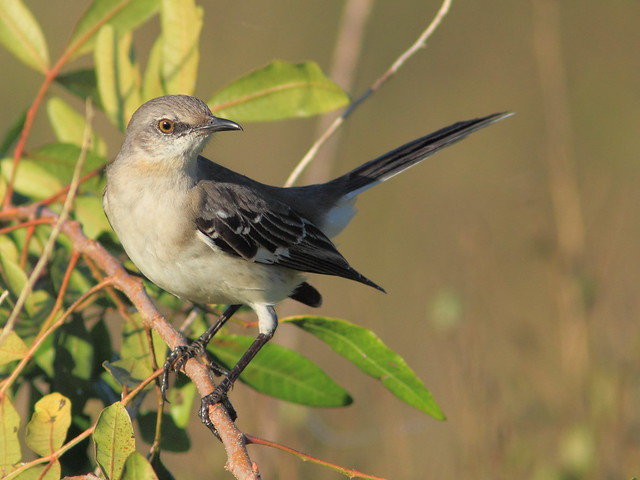
In the meantime, a Palm Warbler appeared atop the pepper tree, against a background of distant foliage.
To my surprise, a small flycatcher came out of nowhere and alighted right in front of me. Its call sounded like the “Whit” of a Willow Flycatcher.
It was obviously an Empidonax species, but which member of this genus? Its wings were quite short, as the primary tips barely extended to the roots of its tail feathers.
Willow Flycatchers are a bit unusual here during winter, and strongly resemble Alder Flycatchers, the other member of the “Traill’s” complex. Many such Empids are silent, and are simply called “Traill’s” Flycatchers, though Alder Flycatchers are said to be much more prevalent. In any event, this bird had a short bill and quite a prominent eye ring. These features , along with the short wings, strongly suggest that is was a Least Flycatcher.
Indeed, when I got home and researched their vocalizations, the Least Flycatcher is said to give a sharper “Wit!” call than the “Whit” of a Willow, a rather fine distinction. Up in Illinois, I often encountered Least Flycatchers singing “Che-Bek,” but this was the first time I had ever heard the “Wit” call. For comparison, here is a photo of a Willow Flycatcher I took last year in Illinois. Note the more substantial bill and subdued eye rings. To my eye, the Willow and Alder Flycatchers also look more robust, more closely resembling wood-pewees without crests. This one confirmed its identity by singing “Fitz-beeyou.”
Willow Flycatchers also have unusually broad bills. I am quite certain of the identity of this one that I photographed here in Florida this past October, as its “Whit” call was distinct, and it had a faint eye ring and did not exhibit the crest of an Eastern Wood-Pewee.
Loggerhead Shrikes have been rather uncommon in the wetlands, though I have seen a few in the residential area near our home. I took a practice shot of this one.
After a short walk but extended standing on the levee trail, I stretched my legs and walked back to the gravel road, advancing towards the large lake. Trema trees are a great source of food for wildlife, as their fruit is produced throughout winter. However, only a few trees have ripe berries at any given time. I found one such tree, and at first only saw Palm Warblers, mockingbirds and this Gray Catbird.
My eye then caught movement of a bird that looked too big to be a warbler. Indeed, it was a Blue-headed Vireo.
Suddenly, I realized that a Common Ground-Dove was also staring down at me.
The little dove almost blended in with the branches, and I waited for it to move into the open for this shot.
An Eastern Phoebe then joined the others on the tree. It pecked at one of the berries and ate something, perhaps an insect. It probably would have been unusual for it to eat a berry, though I have seen other flycatchers (kingbirds) eat fruit.
At the lake, I watched as a pale Little Blue Heron captured and ate some creature in the high grass– a lizard? It then stepped over to a rock, where it appeared to be trying to disgorge its catch, shaking its head back and forth with its mouth open.
Nothing ever came out of its mouth, but before finally settling down it repeatedly scratched at its upper throat as if attempting to push something out towards its bill.
A Gulf Fritillary, its image steadied by my new monopod, provided some nice views.
On my way back home, I passed the Trema tree and saw a second Common Ground-Dove roosting nearby in open sunlight. They seem always to travel in pairs.
As a bit of a sad “footnote,” I again saw this one-legged Wood Stork, which I first photographed four weeks ago. I don’t know how it is surviving with only one leg. It is their habit to stand on one foot and stir the water with the other, thus frightening fish into their open jaws. Hopefully it will stop somewhere nearby (my backyard, please!) so its ambulation and foraging method might be observed.
Posted by: Ken @ 9:04 pm
This morning’s post is, of necessity, a patchwork of unrelated events. The past two weeks have been full of family fun, mostly unrelated to birding. Among other house guests, our two Illinois granddaughters (six and seven years old) arrived a few days before Christmas and departed New Year’s Eve. The girls slept in the “computer room,” actually our fourth bedroom that rarely serves the architect’s purpose. As a result, my computer face time has been limited to scanning e-mail titles and opening only those that appeared to require immediate action.
The children brought with them a cold virus that thankfully spared me until the morning after after Mary Lou and I sang in the Christmas Eve Choir. As usual it knocked me down and I ended up on antibiotics for sinusitis and bronchitis. My confinement inside the house for a few days gave the girls an added incentive to call me when they saw any big birds visiting our back yard. They did not turn up any rarities, but this does provide a theme of sorts for my past week’s photos.
They spotted this Green Heron, at one end of the size spectrum. With its neck drawn in, and not counting its long bill, it is no larger than a pigeon and weighs even less.
A Great Blue Heron seemed to ignore the kids– they drew nearer as I had to back up in order to fit the whole bird in the frame. It actually assumed a rather relaxed posture.
A Tricolored Heron hurried along the lake margin, changing directions willy-nilly, as if unable to concentrate on any particular route.
Scott, our neighbor and hiking companion, saw how badly I needed a new monopod. My old one could not bear the weight of my camera and long lens when it was extended. He gave me one for Christmas. I tested it on these cooperative subjects. In many cases I can see an improvement in image quality in comparison to hand-held photos.
Wood Storks have been low in number so far this winter, hopefully a sign that they are busy starting families after three unsuccessful breeding seasons. For three of the last four years, they failed to nest in their major rookery at Corkscrew Swamp. Water levels are critical– if too low they do not have alligators under the nests to protect their young from predators; if too high their prey species are too dispersed and they may fly many miles to find food and their young will starve.
The stork is stirring the water with one foot, hoping to frighten small fish into its waiting jaws.
White Ibises have been numerous, evidence of several bountiful years (click on photo for more views).
An immature White Ibis preened lakeside.
This Anhinga was resting on the edge of our lawn and it did not permit me to get very near.
Ready to take off, it lightened its cargo. I have often seen larger birds evacuate before taking flight.
The girls called me to report these Egyptian Geese on our lawn. While I have observed a pair fly over our wetlands on a couple of occasions, these were the first I have ever seen on our property. This introduced species is aggressive towards other water birds and is known to ferociously protect its nest. Its breeding range is spreading northward up the Atlantic coastal states. Not a true goose, it is a member of the shelduck family, a group that is in some ways intermediate between ducks and geese.
Muscovy Ducks have colonized most of the lakes in southern Florida, but appear to maintain some dependence upon humans for shelter and handouts of food. This is an alpha drake that keeps a small harem of three or four hens in our section of the lake, defending them against other males. Muscovies also have unique features that place them between ducks and geese, but DNA evidence does not show a close relationship to the shelducks. They lack body fat and are unable to survive cold winters. They have followed several “boom and bust” cycles and have been relatively few in number this year. I witnessed infanticide at one point when they were unusually abundant and discussed it here.
Now here’s a face that only a mother hen can love!
I photographed this Snowy Egret with “golden slippers” a few days before the company arrived.














